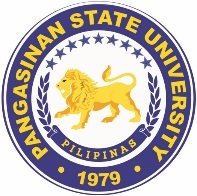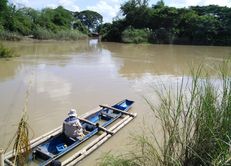Abstract
This study is concerned with the analyses of the quality of water in terms of its physical, chemical and biological characteristics; the aquatic resources in terms of variety of fish and volume of fish catch; and the significant relationship between the quality of water and aquatic resources of Mangabol lake during wet and dry season. Data collected were investigated with the descriptive-comparative method of research (Stangor, 2011) using laboratory analysis. The physical and chemical characteristics of Mangabol lake met the criteria of DENR for Class C Water Quality for the propagation and growth of fish and other aquatic resources. The biological characteristics also fall within the standards during the dry season, however, the values get beyond the standards during wet season. There are 17 varieties of aquatic resources harvested at Mangabol lake. The volume of fish catch in kilograms is greater during the wet season than during the dry season. The quality of water during wet and dry season only differ in depth, turbidity, total suspended solids, salinity, nitrite, chlorophyll - a, total coliform, and fecal coliform. These characteristics are higher during the wet season than in the dry season. The water quality depth, turbidity, temperature, total suspended solids, salinity, dissolved oxygen and chlorophyll-a are directly related to the aquatic resources in terms of volume of fish catch during wet and dry season. Although most of the characteristics are way below the criteria, efforts to continually preserve the quality of water and aquatic resources of Mangabol lake must continue.
Old folks say that Mangabol lake is one of the fish sanctuary in Pangasinan. It has been supplying Bayambang and nearby towns with variety of fish up to the present. The community around the lake is dependent on the local resources, basically fishing, and agriculture. The local government of Bayambang, Pagasinan is monitoring the water level of Mangabol lake to support the irrigation for growing onions in some 2,000 hectares of agricultural land. San Gabriel 1st, San Gabriel 2nd, San Vicente, Manambong Sur, Manambong Norte, Paragos, and Tampog aside from the other four others agricultural areas are the barangays that grow onions irrigated by water sourced from Mangabol lake. The town of Bayambang supplies about thousands of metric tons of white and red onions in the Ilocos, making Bayambang the biggest supplier of onion in Region I.
The researcher wanted to inform people in San Gabriel 2nd, Bayambang, Pangasinan whose means of livelihood is fishing and farming in order to boost their economic status. There are no written or clear scientific description about the condition of the lake and this was found by the researcher as a gap in the study of water ecology preservation and water pollution prevention.
Teresita Sunga Ph.D.
Pangasinan State University, Philippines
[email protected]






 Except where otherwise stated, content on this site is
licensed under a Creative Commons Attribution 3.0 License.
Except where otherwise stated, content on this site is
licensed under a Creative Commons Attribution 3.0 License.
